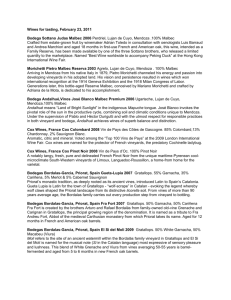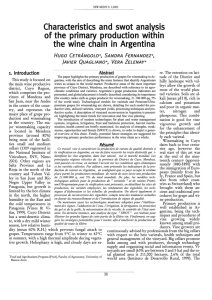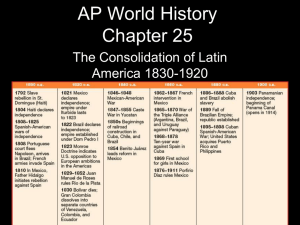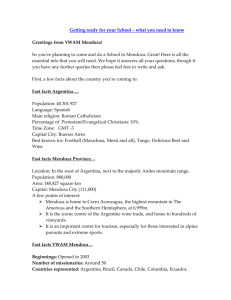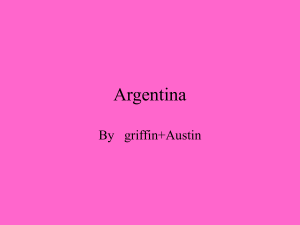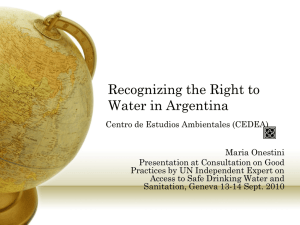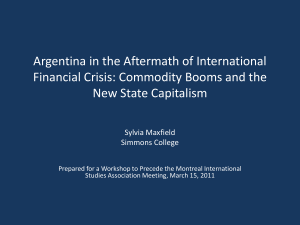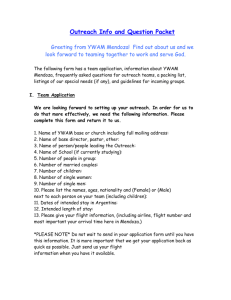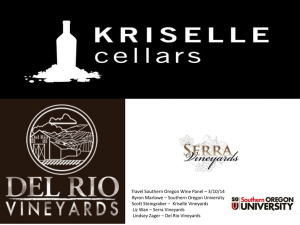ArgentinaEducation
advertisement
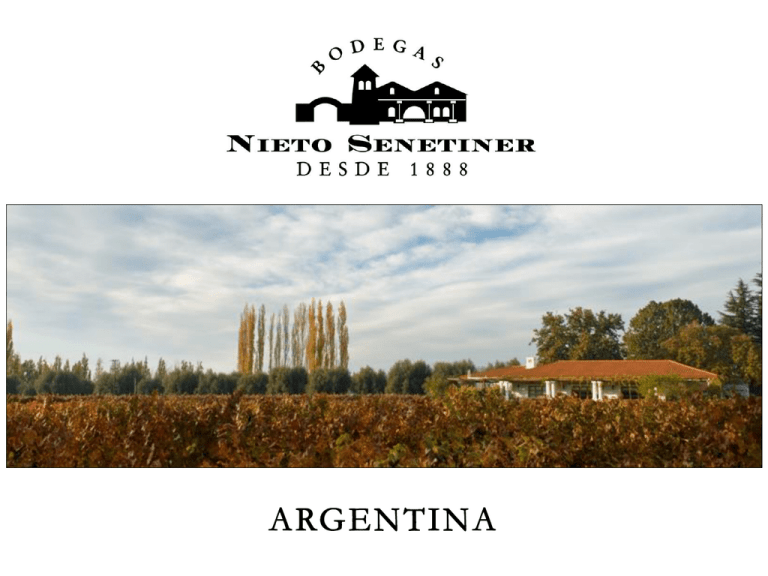
Argentina’s name is derived from the Latin word Argentum, meaning silver The region that is now Argentina has been inhabited by indigenous groups since at least 11,000 BC Europeans arrived in the area in 1516, led by Spanish explorer Juan Diaz de Solis The May Revolution took place May 18 to 25, 1810 in the capital, Buenos Aires After hearing that Napoleon had invaded Spain, the people of Argentina began their war of independence, which lasted from 1810 to 1818 Argentina declared independence on July 9, 1816 Argentina is very urbanized – 90% of its population lives in the cities Argentina’s population is estimated at around 40 million people Greater Buenos Aires metropolitan area has become one of the largest urban areas in the world Gouchos are nomadic, South American cowboys who are responsible for the high quality steaks for which Argentina is known The gauchos served as a nationalistic symbol to represent freedom during the Argentinean revolution and journey for independence The Tango originated in Buenos Aires, Argentina Located in southern South America World's largest Spanish-speaking country Argentina’s capital is Buenos Aires, the second largest city in South America Argentina can be divided into six regions: 1. 2. 3. 4. 5. 6. Gran Chaco Mesopotamia the Pampas Patagonia Cuyo - Mendoza, Luján de Cuyo Argentine Northwest Major rivers include Parana, Pilcomayo, Paraguay, Uruguay, and the Colorado Temperate climate, which ranges all the way from subtropical to sub polar (just north of Antarctica) Major geographic features include the Andes Mountains Mendoza is the capital city of the Mendoza Province Two of the main industries are olive oil production and winemaking The region around greater Mendoza is the largest wine producing area in Latin America Mendoza is one of nine cities worldwide in the network of Great Capitals of Wine The city is an emerging enotourism (wine tourism) destination Ghhgghfghf Five primary wine growing regions 1. Northern 2. Eastern 3. Central – Luján de Cuyo 4. Uco Valley 5. Southern Accounts for nearly 80% of the country's entire wine production Dusty, arid countryside with young dry, rocky and sandy soils and only 7-9” of rainfall per year – 300+ days of sun per year Hot, desert-like climates by day and cool mountain nights High altitude creates a unique microclimate that distinguishes Mendoza from the rest of the world, with vineyards planted at 1,500 – 5,580 ft and annual temperatures of 59˚F - 65˚F Due to very little rainfall, the Andes provide the most important source of water via melted snow, controlled through an indigenous irrigation system of rivers and irrigation canals Altitude: 600-1,100m (2,000-3,600ft) Key sub-regions: Maipú, Luján de Cuyo, Lunlunta, Agrelo Argentina’s wine heritage was born in the Central Region Malbec was first planted in Agrelo Luján de Cuyo and Maipú are two of the region’s most traditional terroirs Carved out by the Mendoza River, the Central Valley benefits from old alluvial deposits and the disintegration of minerals from the Andes An area of the Central Region situated in the upper Mendoza Valley Many vineyards sit at altitudes of around 3,280 ft Historically known as the “Primera Zona” – it stands out in Mendoza for producing high quality grapes The first delineated appellation for the purposes of wine production in 1993 Key varietals: Malbec, Cabernet Sauvignon, Chardonnay & Torrontes Majority of vineyards are on alluvial soils; sandy or stony surfaces on clay substrata In 1888, Italian immigrants planted the first vines in the Vistalba Valley, Lujan de Cuyo district, Mendoza. Originally the vineyards consisted of different European varietals, but over time, Malbec and Bonarda dominated the landscape of Vistalba´s vineyards. Now, 120 years later, shoots from mother vines continue producing groundbreaking wines. Pioneering Malbec & Bonarda since 1888 Leading position with Malbec & groundbreaking work with Bonarda Unique and privileged terroir Three outstanding estate vineyards located in the Primera Zona, Luján de Cuyo, provide wines with unique characteristics achieved from the best combination of altitude, climate and soil at the foot of the Andes Head Winemakers Roberto Jesus Gonzales & Tomas Hughes Wisdom gained over time influences winemaking – these two men have worked together for more than 20 years at Nieto Senetiner External Advisor – Paul Hobbs


